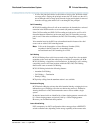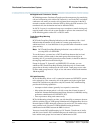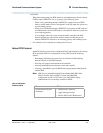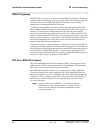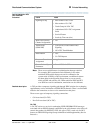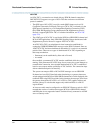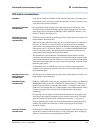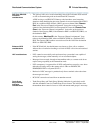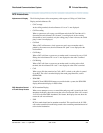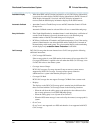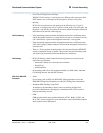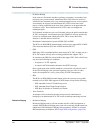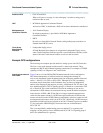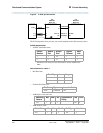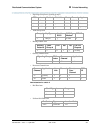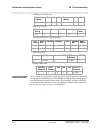
Distributed Communications System
325
Administration for Network Connectivity
555-233-504 — Issue 1 — April 2000 CID: 77730
B Private Networking
DCS Interactions
Alphanumeric Display The following features allow transparency with respect to Calling or Called Name
Display and miscellaneous ID.
• Call Coverage
At the calling terminal, the miscellaneous id “cover” is not displayed.
• Call Forwarding
When a system user calls a party on a different node in the DCS and the call is
forwarded, the miscellaneous ID “forward” is not displayed. At the covering
(forwarded-to) user’s terminal, only the calling party’s name is shown; the called
party’s name is not displayed.
• Call Park
When a DCS call between a local system user and a user on another node is
parked by the remote user, the miscellaneous ID “park” is not displayed at the
local terminal.
• Call Pickup
When a DCS call from a system user to another node is answered by way of Call
Pickup, the miscellaneous ID “cover” is not displayed at the caller’s terminal.
• Call Waiting
When a DCS call from a system user to another node is waiting at the called
terminal, the miscellaneous ID “wait” is not displayed at the caller’s terminal.
• CAS
When a user dials the extension for CAS, a RLT is seized or the caller is queued
for an RLT. The caller’s terminal displays the trunk group identifier, such as
OPERATOR.
• ISDN-PRI
If both DCS and ISDN-PRI features are provided with a system, the ISDN-PRI
display information displays in DCS format.
DCS Attendant Control
of Trunk Group Access
• DCS Attendant Display
When a user attempts to access a controlled trunk group and is routed to the local
attendant, the display shows the reason the call was redirected. If the call is routed
via CAS or the Inter-PBX Attendant Calls feature, the display does not show the
reason the call was redirected.
• UDP
DCS tie trunks should not be attendant controlled. This would result in all UDP
calls on the controlled tie trunk being routed to the controlling attendant instead of
to the desired destination.



